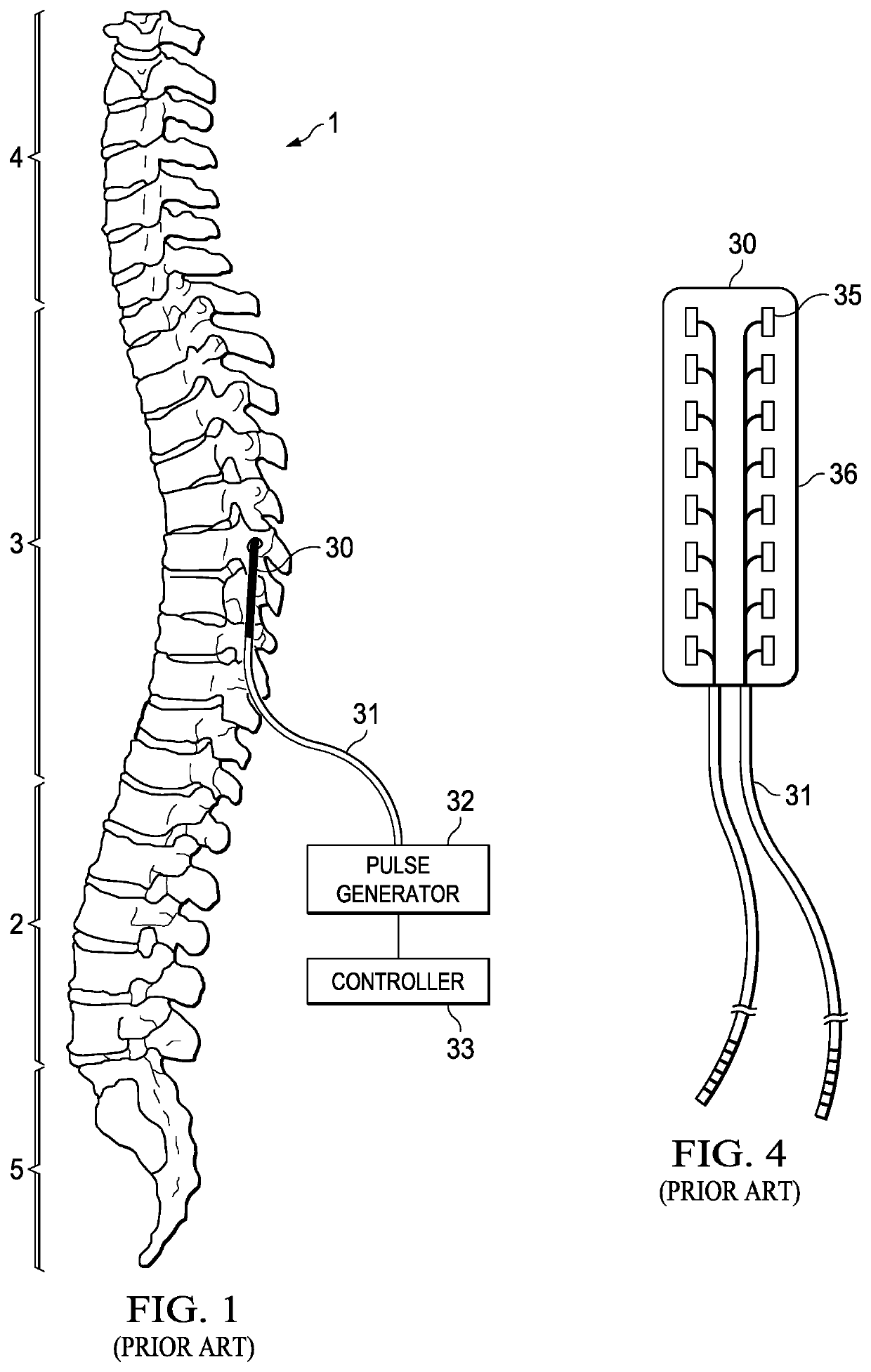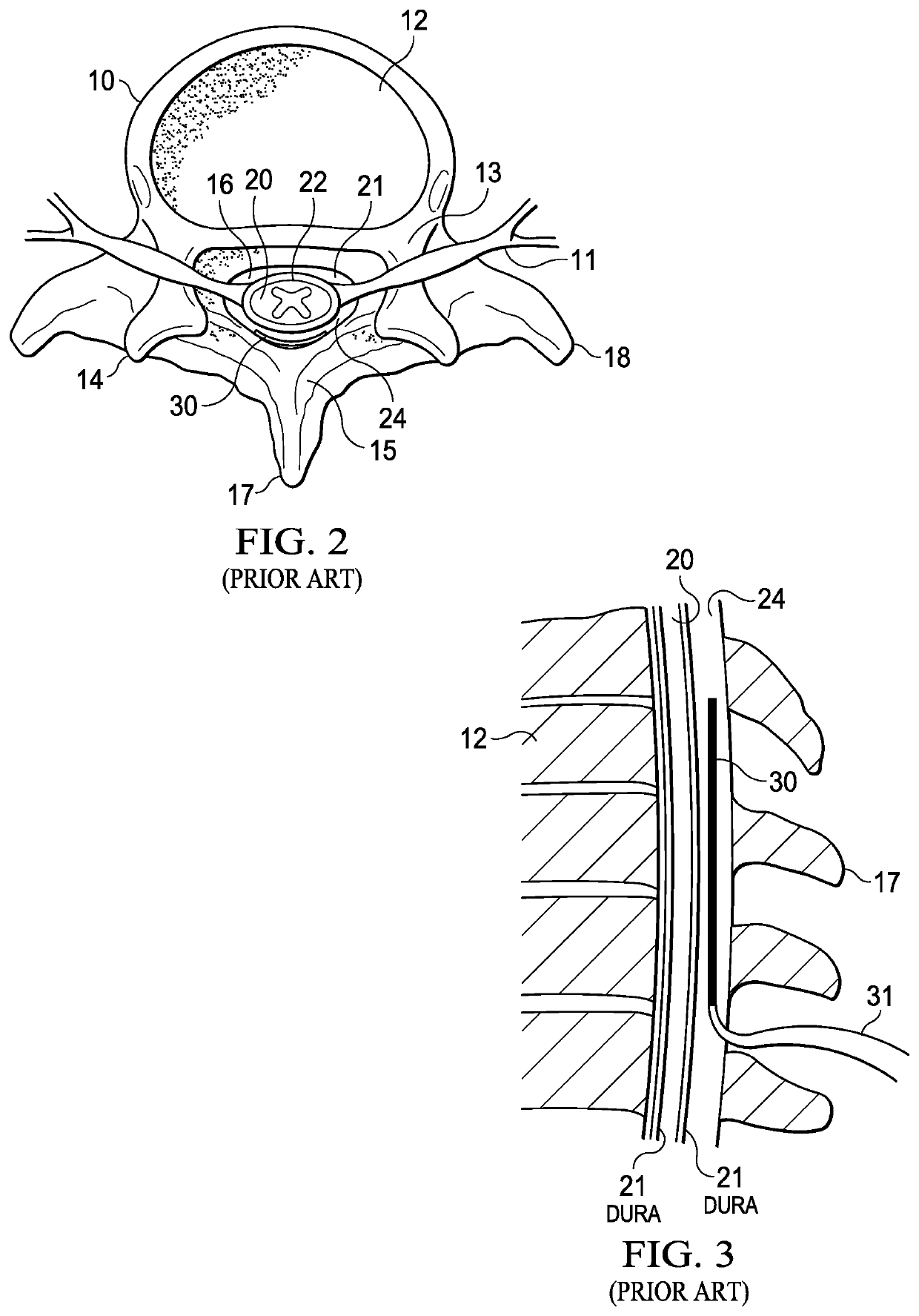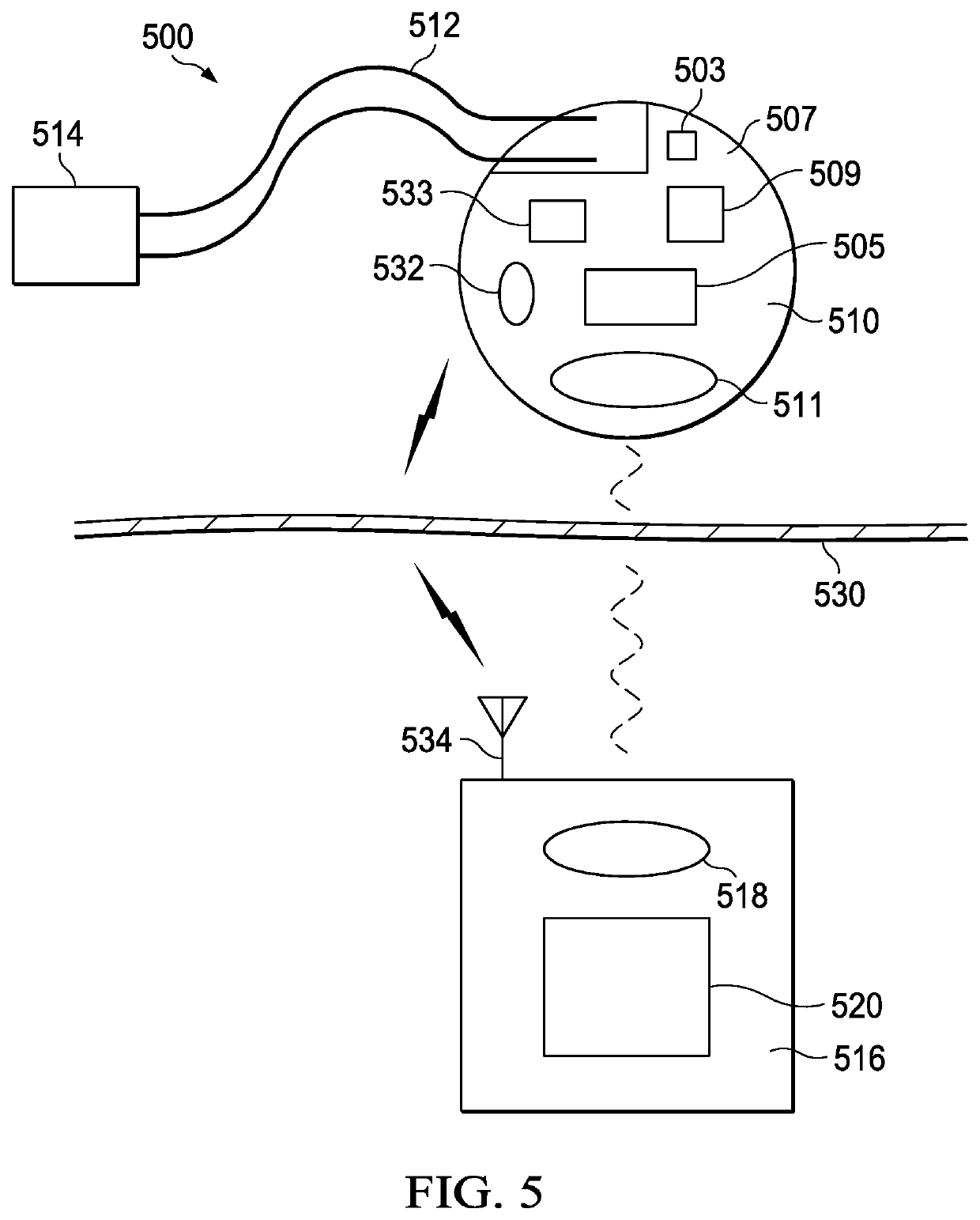Electrode and percutaneous lead and method of use
a technology of electrodes and percutaneous leads, applied in the field of implantable pulse generators, can solve the problems of affecting functional ability, unable to depolarize the targeted neurons, and disrupting the perception of pain
- Summary
- Abstract
- Description
- Claims
- Application Information
AI Technical Summary
Benefits of technology
Problems solved by technology
Method used
Image
Examples
Embodiment Construction
[0085]In the description that follows, like parts are marked throughout the specification and figures with the same numerals, respectively. The figures are not necessarily drawn to scale and may be shown in exaggerated or generalized form in the interest of clarity and conciseness.
[0086]Referring then to FIG. 5, IPG charging and communication system 500 comprises an IPG device 510 implanted subcutaneously beneath skin surface 530.
[0087]IPG device 510 comprises an external non-metallic case 507 which facilitates transmission of charging and communication signals, with external system manager 516, as will be further described.
[0088]IPG device 510 further comprises main processor 505, operatively connected to signal processor 509. Main processor 505 is further operatively connected to secondary coil 511 and RF antenna 532, as will be further described.
[0089]Signal processor 509 is operatively connected to optoelectrical devices 503, as will be further described.
[0090]Optoelectrical dev...
PUM
 Login to View More
Login to View More Abstract
Description
Claims
Application Information
 Login to View More
Login to View More - R&D
- Intellectual Property
- Life Sciences
- Materials
- Tech Scout
- Unparalleled Data Quality
- Higher Quality Content
- 60% Fewer Hallucinations
Browse by: Latest US Patents, China's latest patents, Technical Efficacy Thesaurus, Application Domain, Technology Topic, Popular Technical Reports.
© 2025 PatSnap. All rights reserved.Legal|Privacy policy|Modern Slavery Act Transparency Statement|Sitemap|About US| Contact US: help@patsnap.com



